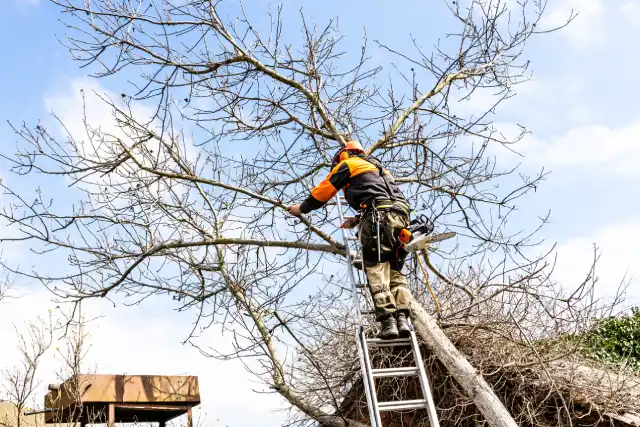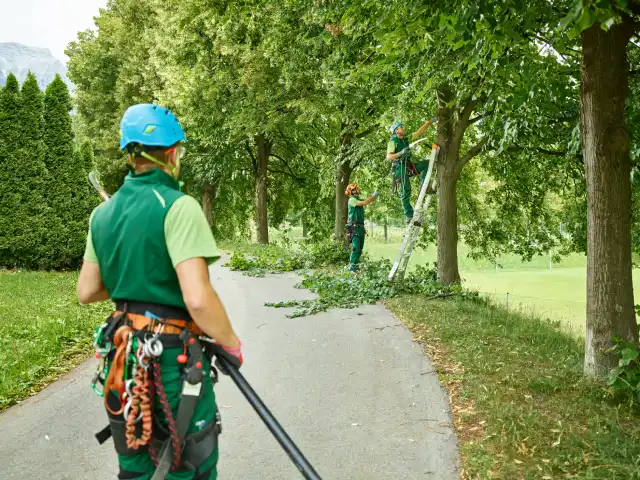Look for providers who understand Oregon’s specific regulations regarding tree care and removal. They should maintain proper insurance coverage and demonstrate commitment to ongoing education in Pacific Northwest arboriculture. The best services offer comprehensive care plans that account for our unique seasonal patterns and provide guidance for long-term tree health in our changing climate.
Frequently Asked Questions
How does Eugene’s rainfall affect tree care scheduling and costs?
Eugene’s distinct wet and dry seasons significantly impact tree care operations throughout the year. During our wet season (November through April), professional services must carefully schedule work around weather patterns to ensure both worker safety and optimal tree health. This often requires specialized equipment designed for wet conditions, which can affect service costs.
Most major pruning work is scheduled during our drier months (July through September) when conditions allow for better visibility and reduced risk of disease transmission through cuts. However, emergency services operate year-round, with crews trained specifically for wet weather operations. Professional services typically adjust their rates seasonally, with premium charges applying during emergency weather responses or particularly challenging conditions.
What unique signs of tree stress should Eugene property owners watch for?
Given our climate, Eugene trees exhibit specific stress indicators that differ from other regions. Excessive moss growth, while common in our area, can indicate poor air circulation within the crown when present in unusual patterns or quantities. Fungal fruiting bodies (mushrooms) appearing around the base of trees warrant immediate professional attention, as they often signal internal decay accelerated by our wet conditions.
Watch for unusual patterns of needle or leaf drop, particularly during summer drought periods. Native species like Douglas fir and Western red cedar have adapted to our normal seasonal patterns, so unexpected foliage loss often indicates underlying health issues. Professional arborists can distinguish between normal seasonal changes and problematic symptoms.
How should Eugene property owners prepare their trees for increasing summer drought conditions?
As our summers become increasingly dry, proper tree preparation during spring months becomes critical. Professional services recommend establishing deep watering protocols that encourage roots to grow downward rather than staying near the surface. This typically involves less frequent but longer watering sessions, allowing moisture to penetrate deeply into the soil profile.
Mulching practices specific to our climate help retain moisture while preventing fungal issues common in the Pacific Northwest. Professional services can demonstrate proper mulching techniques that maintain adequate distance from tree trunks while providing maximum benefit for root systems during dry periods.
What makes Eugene’s tree removal requirements unique compared to other Oregon cities?
Eugene maintains specific regulations regarding tree removal, particularly for street trees and heritage specimens. Professional services must navigate complex permit requirements that vary based on tree size, species, and location. The city’s commitment to maintaining our urban canopy means that removal permits often require detailed justification and may include replacement planting requirements.
Heritage trees receive special protection and generally require extensive documentation and public notice before removal can be considered. Professional services familiar with local regulations can help property owners navigate these requirements while ensuring compliance with city ordinances.
How often should professional inspections be conducted in Eugene’s climate?
Given our unique climate patterns, most properties benefit from bi-annual professional inspections. Spring inspections, typically conducted in March or April, focus on assessing winter damage and identifying potential issues before the growing season begins. Fall inspections, usually performed in September or October, help prepare trees for winter storms and identify structural issues that could become problematic during wet weather.
Properties with mature native conifers or trees near structures may require more frequent monitoring, particularly if they show signs of root problems or structural concerns. Professional services can establish customized inspection schedules based on species composition, property location, and specific risk factors present in your landscape.

